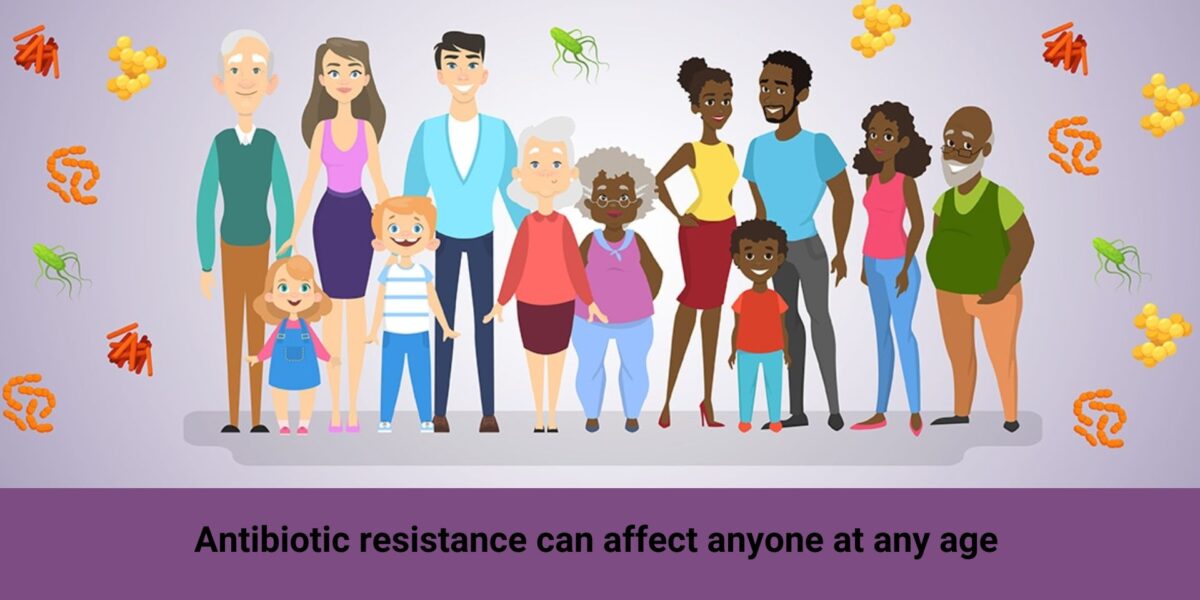
 September is Sepsis Awareness Month, which was launched by the Sepsis Alliance to raise awareness about preventing infections to prevent sepsis, a leading cause of death in US hospitals. Special thanks to Sepsis Alliance for this guest blog post.
September is Sepsis Awareness Month, which was launched by the Sepsis Alliance to raise awareness about preventing infections to prevent sepsis, a leading cause of death in US hospitals. Special thanks to Sepsis Alliance for this guest blog post.
What is sepsis?
Sepsis is the body’s toxic or severe response to an infection. It occurs when an infection triggers an extreme chain reaction throughout the body, leading to tissue damage, organ failure, and even death if not treated quickly. Each year in the US, at least 1.7 million adults develop sepsis and at least 350,000 adults who develop sepsis die.
What causes sepsis?
Sepsis is caused by an infection, which can originate from bacterial, viral, fungal, or parasitic sources. Common infections that can lead to sepsis include pneumonia, influenza (flu), urinary tract infections, skin infections, and infections in the intestines.
Who is at risk for sepsis?
Anyone can develop sepsis, but certain individuals are at higher risk, including:
- People age 65 years and older
- Infants and young children
- People with weakened immune systems
- People with chronic health conditions or illnesses such as diabetes, kidney disease, or cancer
- People who are malnourished
What are the symptoms of sepsis?
Sepsis symptoms can start very subtly, or they can come on suddenly. The symptoms may mimic flu or another virus. It’s important to look for the warning signs of sepsis. Spotting these symptoms early could prevent the body from entering septic shock and could save a life.
Sepsis Alliance uses the memory tool Sepsis: It’s About TIME™, to highlight the most common signs and symptoms:
- T – Temperature, higher or lower than normal
- I – Infection, may have signs and symptoms of an infection
- M – Mental Decline, confused, sleepy, difficult to rouse
- E – Extremely Ill, “I feel like I might die,” severe pain or discomfort, shortness of breath
Watch for a combination of these symptoms, especially if you or the individual recently had a cut, scrape, surgery, any illness, were exposed to a virus, or had an invasive procedure. If you suspect sepsis, see a healthcare professional immediately, call 911, or go to a hospital and tell them, “I am concerned about sepsis.”
How is sepsis diagnosed?
Unlike diseases or conditions like diabetes or kidney stones, no single test for sepsis exists. However, physicians diagnose sepsis by evaluating your symptoms and medical history, as well as some physical exams and laboratory tests. Blood and urine tests can help identify infections and organ dysfunction, and imaging studies such as X-rays or CT scans may be used to locate the source of infection.
How is sepsis treated?
Sepsis is a medical emergency that requires immediate hospital care. Treatment for sepsis varies and often involves treating the underlying infection. Treatment can include:
- IV fluids to keep blood pressure stable and protect organs
- IV antibiotics to fight the infection quickly
- Medications to help reduce inflammation or maintain blood pressure
- Oxygen or a ventilator if breathing support is needed
- Other life-support treatments such as dialysis or ECMO, if organs are failing
Can sepsis be prevented?
While not all cases of sepsis can be prevented, the risk can be reduced by:
- Taking antibiotics or other antimicrobials if prescribed, finishing the entire course of medications
- Not taking antibiotics you do not need, or taking someone else’s antibiotics. Using antibiotics wisely can help reduce the chances of developing antibiotic-resistant infections.
- Frequent and thorough handwashing with soap and water for at least 20 seconds
- Asking your doctor, nurse, or other healthcare professional to wash their hands if you have not seen them do so
- Getting an annual flu immunization and other immunizations as recommended by a trusted healthcare professional
- Coughing into your elbow, not your hand (to help prevent spreading of germs if you are sick)
- Maintaining a healthy lifestyle
- Seeking urgent medical help if an illness does not seem to be improving, or it is getting worse
What are the long-term effects of sepsis?
Many people recover from sepsis, but some experience long-term complications. ~1% of sepsis patients undergo one or more surgical amputations of a limb or digit. Additionally, up to 50% of sepsis survivors experience post-sepsis syndrome (PSS), with long-term physical effects such as:
- Insomnia and fatigue
- Breathing difficulties
- Muscle and joint pain
- Repeat infections
- Psychological effects such as hallucinations, panic attacks, nightmares, cognitive impairments, and depression
Where can I find more information about sepsis?
Explore the Sepsis Alliance website for additional information about sepsis, resource guides, videos, and more. Sepsis Alliance also has Sepsis Alliance Connect, where survivors and loved ones who have lost someone to sepsis gather to ask questions and offer support.
Learn more about sepsis, sepsis survivorship, infection prevention, and how you can help save lives and limbs from this condition at Sepsis.org. Learn more about appropriate antimicrobial use and antimicrobial resistance at EndSuperbugs.org.
To join the conversation and get the latest news on infectious diseases:
- Like and follow NFID on social media
- Listen and subscribe to the Infectious IDeas podcast
- Subscribe to receive future NFID Updates
Related Posts

Summertime Is No Time to Skip Handwashing
Read recent news about the importance of handwashing to help stop the spread of infectious diseases

5 Things To Know about Antibiotic Resistance
There are steps everyone can take to help protect against drug-resistant infections

4 Key Steps for a Safe and Healthy Summer
Follow these key tips to help stay healthy this summer and prevent infections that could spoil your fun …
